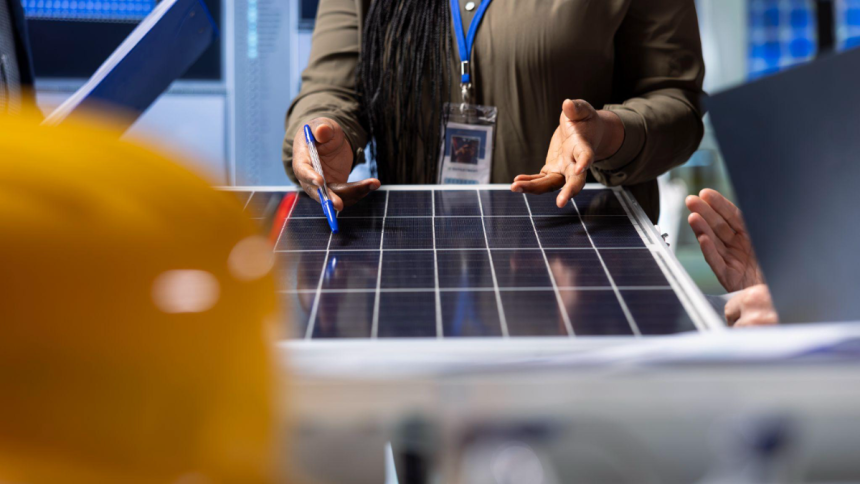Solar energy systems have become increasingly popular for homeowners and businesses seeking sustainable, cost-effective power solutions. While solar panels and their components are designed to be durable and low-maintenance, like any technology, they occasionally encounter issues that require Solar Panel troubleshooting. For beginners, the idea of diagnosing solar problems can be intimidating. However, many common issues can be identified and resolved with basic tools, a little knowledge, and patience.
This guide outlines how to resolve common solar panel difficulties that can improve your system’s reliability. At the same time, we’ll explain how well-known solar manufacturers such as Renogy offer programs such as the Electrician Referral Program to help both end users and installation professionals. No matter if you’re building solar yourself or working in the industry, this guide can help you feel confident to handle basic solar problems.
Common Causes of Low or No Power Output from Solar Panels
One of the first signs of a solar panel problem is when the system produces less power than expected or stops producing power altogether. This can be caused by several factors, most of which are easy to diagnose.
Dirty or Shaded Panels
The efficiency of solar panels depends on direct sunlight. Dirt, dust, bird droppings, leaves, and pollen can coat your panels and stop sunlight from entering, causing less energy to be made. In addition, the presence of nearby trees, buildings, or other obstacles, including scaffolding, can considerably reduce panel performance. Use water and a soft cloth to wipe softly, and you might find your panels function better. Do not use strong cleaning products, as they could spoil the appearance of your tiles.
Loose or Damaged Wiring
After some time, the wires may become loose because of changing weather, natural vibrations, or poor installation. Keep an eye on all the wires and look for worn-out, corroded, or split wires. One problem with even one cable or connection can bring down the whole system. Always shut down the system first and see if the wires work properly using a multimeter.
Faulty Components or Panels
From time to time, a panel or component can develop a problem or fail. If you don’t spot any problems by cleaning, make sure each panel works properly using a multimeter. Panels that generate almost no power from solar energy could be damaged and require repair or changing.
Troubleshooting Battery Charging Issues
For solar systems that include battery storage, another common challenge is ensuring the batteries charge correctly. Batteries store excess energy for use during nighttime or cloudy days, so proper charging is vital for system reliability.
Charge Controller Problems
To stop the battery from being either overcharged or over drained, the charge controller controls the voltage and current going into it. If your battery isn’t being charged, turn to the charge controller display or lights for any error notifications. Renogy controllers and others today come with helpful diagnostics that make it simpler to spot problems.
Battery Health and Compatibility
All batteries, eventually, start to lose some of their ability to store and deliver charge. For each cell in the battery, measure the voltage and match it with what the manufacturer says. A drop in voltage in one or more cells can indicate that the battery should be changed. Besides, check if both your solar panels and battery are capable; an insufficient amount of power from the panels may stop the battery from being fully charged.
How to Identify and Fix Inverter Issues
The inverter is the component that converts DC power from the solar panels or batteries into AC power that your appliances use. If your system’s inverter isn’t functioning, your home won’t receive electricity even if your panels are working fine.
Resetting and Testing Your Inverter
The first thing to try if the inverter isn’t working is to reset it by hitting the reset key or simply powering it off and on again. Watch for warning signals, beeps, or error messages that could show what’s wrong.
Inspect Fuses, Breakers, and Wiring
One reason inverters may stop working is because of blown fuses, tripped circuit breakers, or wiring problems. Ensure that all of these components are whole and installed correctly after your purchase. Mistakes in installation or running a system beyond capacity with the inverter can result in repeated maintenance, so it’s crucial to verify everything.
For new users, built-in diagnostics on Renogy inverters make it easy to find the source of any problems and decide on a solution.
Charge Controller Display Problems and Solutions
Sometimes, the charge controller’s display may go blank, freeze, or show unexpected readings. This can be confusing but often points to specific issues worth checking.
No Input from Solar Panels
When a controller doesn’t get electricity, it could be a wiring issue, or the panel might be faulty. Test the voltage coming from your solar panels using a multimeter. Should your readings be low or at zero even when it is sunny, look closely at your wiring and panels.
Faulty Charge Controller
If the panels are working as they should but the charge controller’s display looks strange or shuts off, the problem may be with the charge controller. You can call or email your manufacturer because Renogy offers support and replacements for warranties.
Why You Should Consider Joining the Electrician Referral Program
If you have a background in electrical work or are developing your solar skills, consider taking your expertise to the next level to Join Electrician Referral Program. This initiative connects certified electricians with customers seeking professional installation, maintenance, and system upgrades for their solar setups.

How the Program Works
Joining the program means electricians must bring a valid electrician license or electrical engineering diploma, plus a link to their Facebook account. When their program is approved, they are offered an exclusive referral link within Impact. When electricians share the link, they can introduce people to Renogy’s solar products and get benefits for making successful recommendations.
Benefits for Electricians
- Earn 7% Cashback: Electricians receive 7% cashback on the net order value (excluding taxes and shipping) for each successful referral.
- Exclusive Discounts: Returning electricians are eligible for a one-time $300 discount on their next purchase, while new electricians can enjoy 50% off their first order.
- Marketing Support: Participants gain access to branded materials, guides, and videos to assist in promoting Renogy products effectively.
- Client Advantages: Referred clients receive exclusive discounts and may be connected with the referring electrician for installation services.
By joining the program, electricians can expand their business opportunities, stay ahead in the growing solar industry, and provide clients with trusted, high-quality solar solutions.
Conclusion
Learning how to solve basic solar panel problems allows you to make your solar panel system run better, for less time and cost. Thankfully, with Renogy by your side and their Electrician Referral Program, you can use reliable products and make the most of your business.
Solar system troubleshooting is a valuable thing to know for both electricians and homeowners eager to expand what they know today and into the future. Initiate the process little by little, use good safety measures, and enjoy going solar.
Lynn Martelli is an editor at Readability. She received her MFA in Creative Writing from Antioch University and has worked as an editor for over 10 years. Lynn has edited a wide variety of books, including fiction, non-fiction, memoirs, and more. In her free time, Lynn enjoys reading, writing, and spending time with her family and friends.















